The City of Melbourne maintains more than 70,000 trees. This website enables you to explore this dataset and some of the challenges facing Melbourne’s Urban Forest.
Individual tree data for City of Melbourne trees is presented below. Pan and Zoom into different areas of Melbourne, click on tree symbols to reveal details, and select between different locations and filters.
Please note the map software is currently being upgraded - and will be fully functional from 1 May 2025
Drag map, click icons for details
| Juvenile | ||
| Semi-Mature | ||
| Mature | ||
| Unknown |
| Eucalyptus | ||
| Platanus | Plane Trees | |
| Ulmus | Elms | |
| Corymbia | Gums | |
| Quercus | Oaks | |
| Other |
Access the Urban Forest Tree data via City of Melbourne's Open Data Portal data.melbourne.vic.gov.au
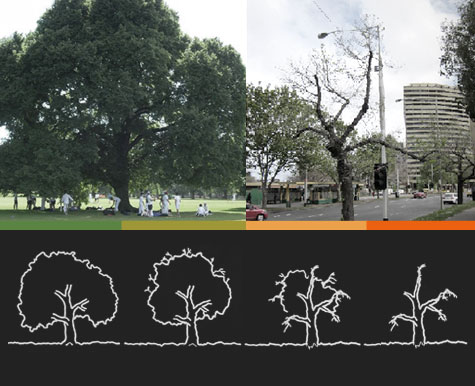
Like all living things, trees decline in health as they age. Trees that are in poor health are not as effective at providing environmental benefits, such as cooling the city, providing habitat or cleaning the air. If a tree’s health is not expected to improve, it is removed from the landscape to enable a new tree to be planted.
Many of Melbourne’s trees, including those in our iconic boulevards and parks, are well over 100 years old. While they have performed remarkably well to date in faring against droughts, changing climate and urbanisation, their health is declining as they age. Many of Melbourne’s trees were planted at the same time, giving us beautiful landscapes of large trees. Unfortunately, this also means that many trees will decline in health and require removal at the same time. In addition to loss of tree canopy cover and amenity, this can reduce the amount of habitat available for wildlife.
A resilient urban forest features age diversity, with species of varying life spans and growth rates.
|
A juvenile tree is classified as any young tree planted within the last few years |
|
|
Semi-mature trees are no longer young but are yet to reach their full potential |
|
|
A mature tree has reached it’s full potential in the landscape. |
Melbourne's most common tree types - graphed by genus - coloured by age classification
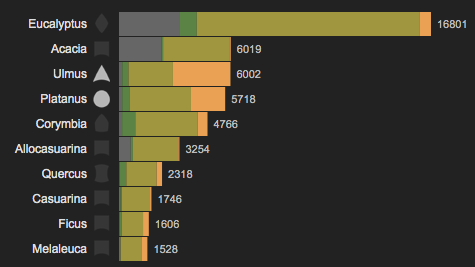
A lack of species diversity leaves the urban forest vulnerable to threats from pests, disease, and stress due to climate change. Currently our urban forest is dominated by Eucalypts, Corymbia, Planes, and Elms. Many of these trees were planted at the same time during condensed periods of planting activity, and large numbers of elms and planes are now reaching the end of their life.
Combined with the substantial losses associated with an ageing tree population, myrtle rust and sycamore lace bug are current threats to the Eucalyptus, Corymbia and Platanus genera. Diversification is a basic rule for reducing risk. A greater range of species will provide greater resilience and long-term stability for the forest as a whole.
The Urban Forest Strategy sets targets to have no more than 5% of any tree species, no more than 10% of any genus and no more than 20% of any family.
Melbourne's canopy graphed: with & without tree planting
|
Without tree planting |
With tree planting |
Canopy cover represents a way of expressing, as a percentage, how much of any given area is shaded by trees.
The canopy cover graph above shows two potential futures for canopy cover in our streets and parks. The lower line represents what is projected to happen to our canopy cover if we stop planting trees. The line above shows what will happen if we replace trees as they are lost and plant new trees at a rate of approximately 3,000 trees per year to 2040.
Canopy cover is a key criterion by which we measure the urban forest’s ability to produce benefits for the community and the environment.
Increasing canopy has been identified as one of the most cost efficient and effective strategies
for mitigating the urban heat
island effect and adapting to climate change. The City of Melbourne has used lidar and orthophotography to obtain accurate
measures for canopy cover across
the city.
City of Melbourne is divided into 10 precincts, and public workshops have been held in each precinct.
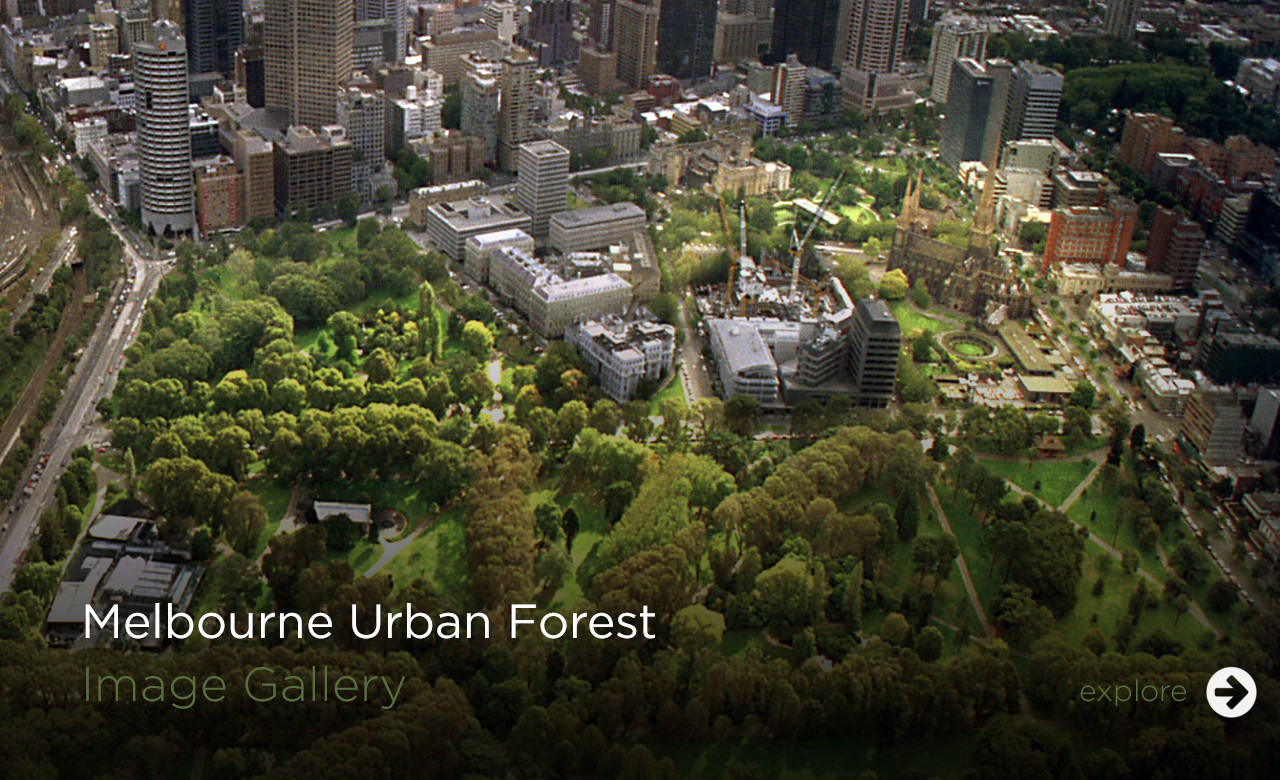
Aerial view of Fitzroy Gardens
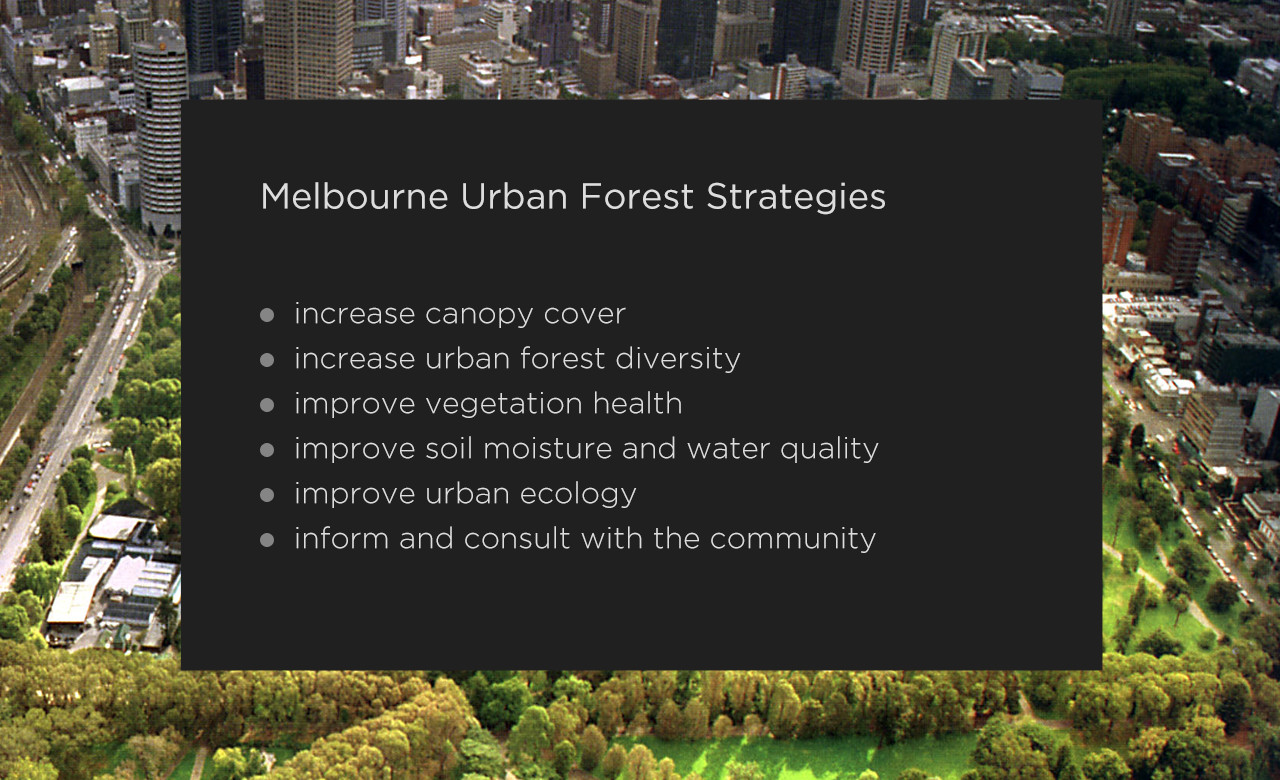
Urban forest strategies
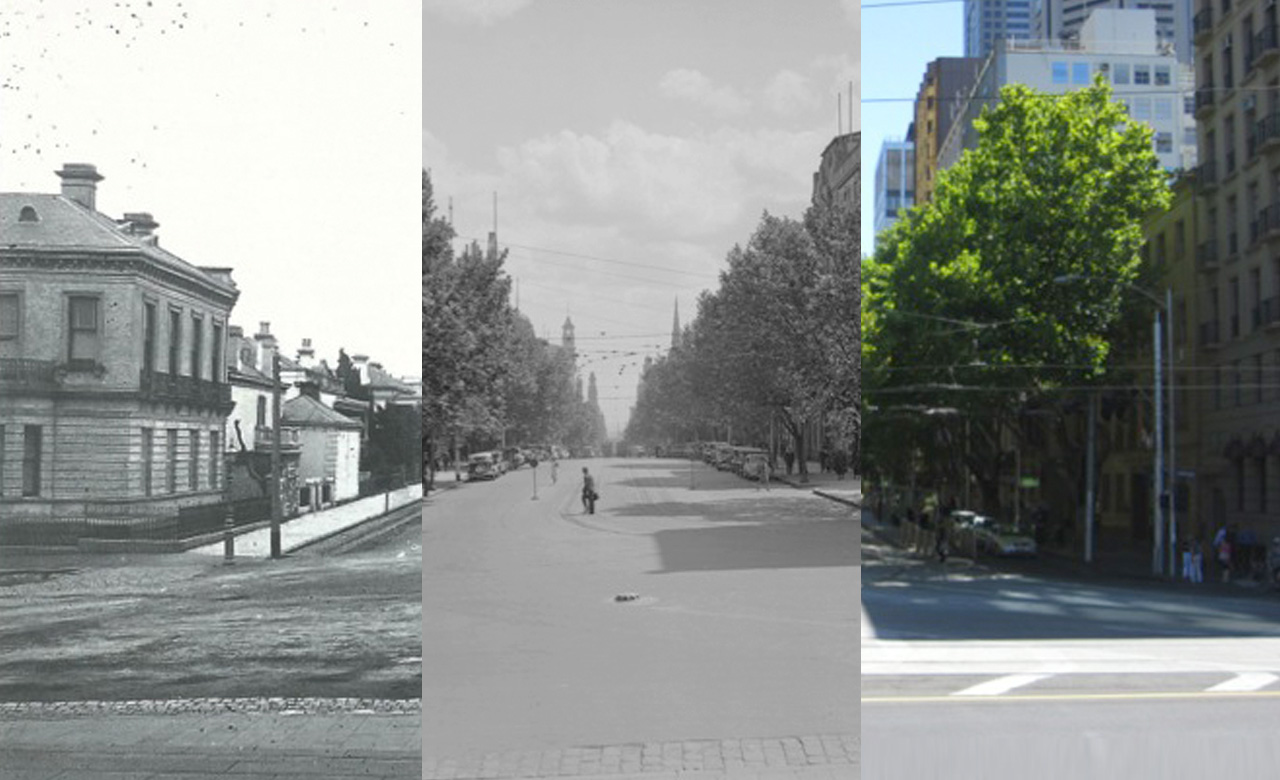
Collins Street 1880, 1945 and 2013
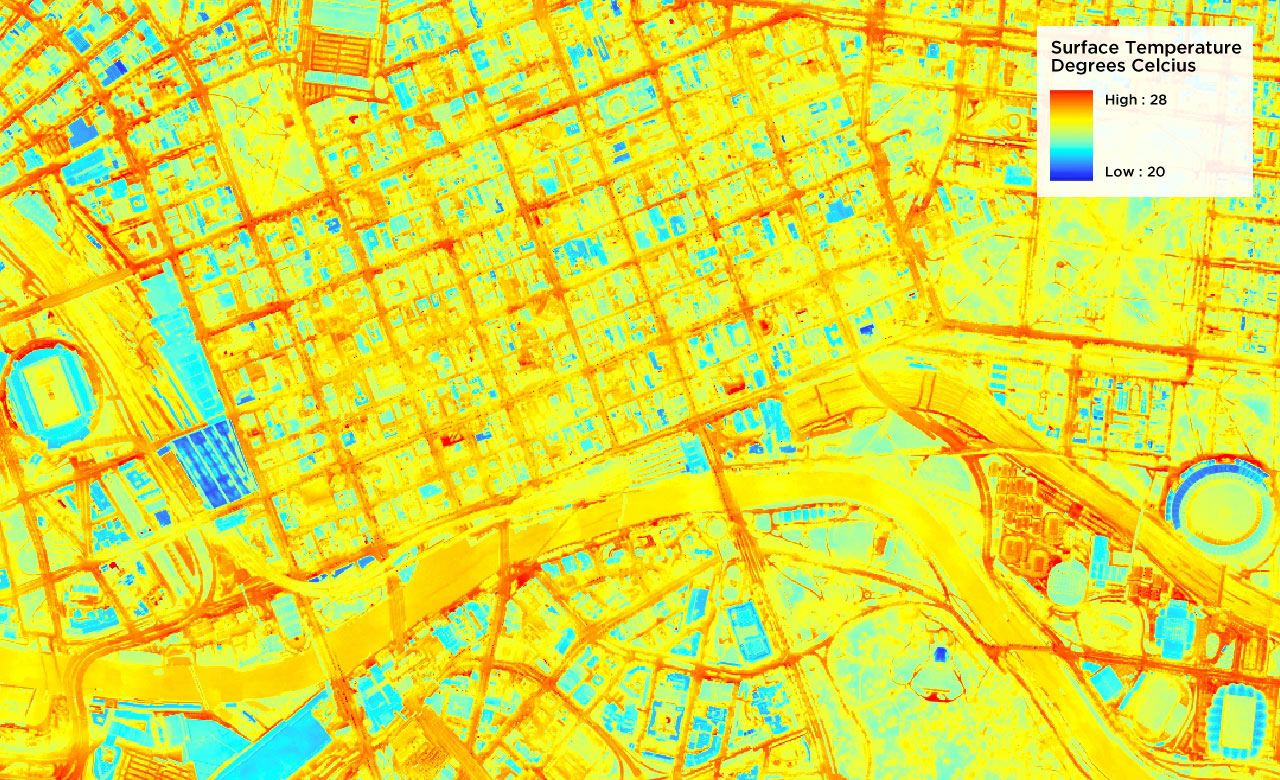
Melbourne thermal imagery at night
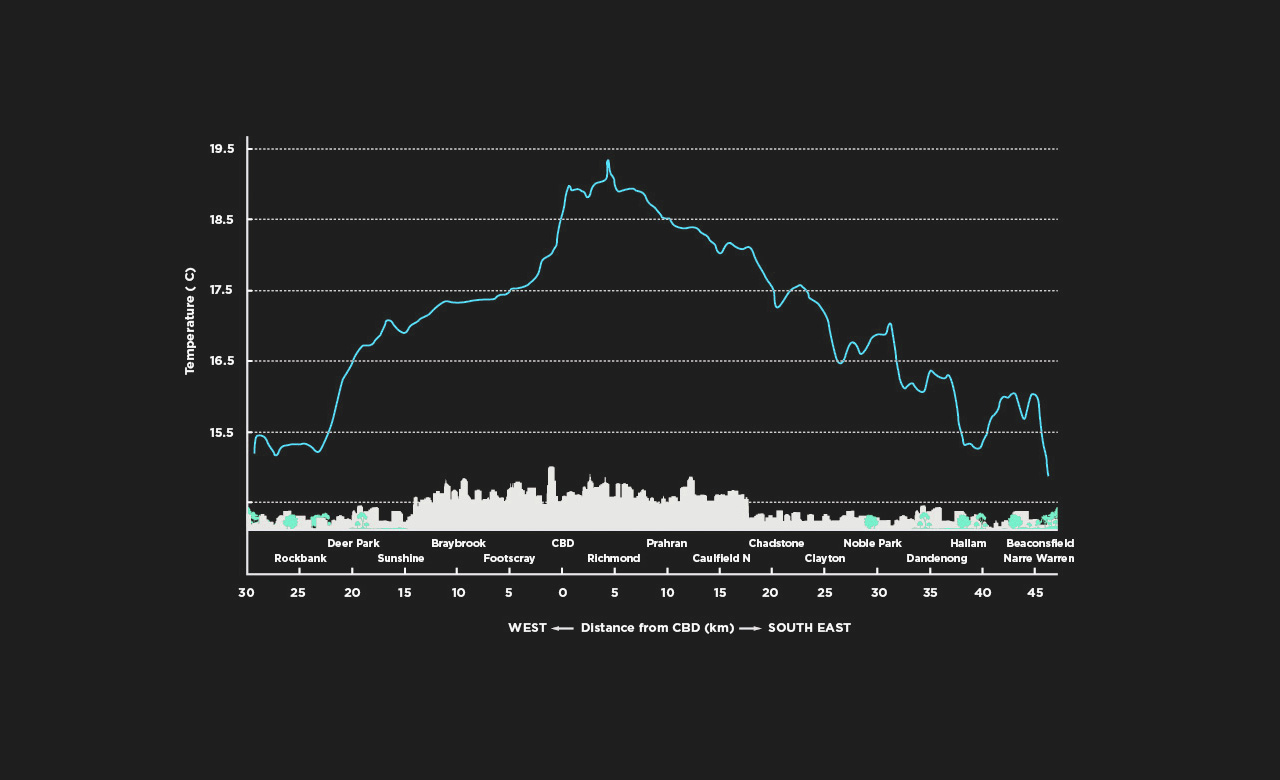
Melbourne urban heat island
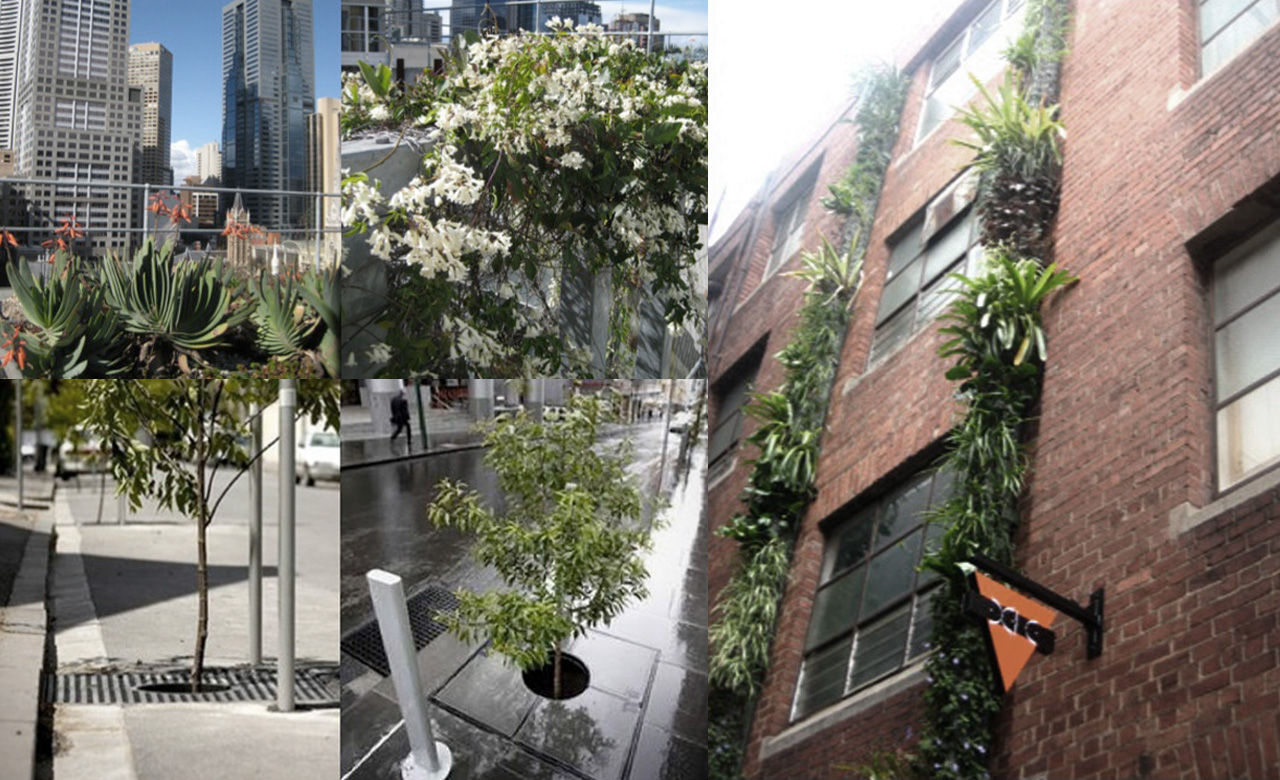
Urban details
Urban forest workshops: Carlton